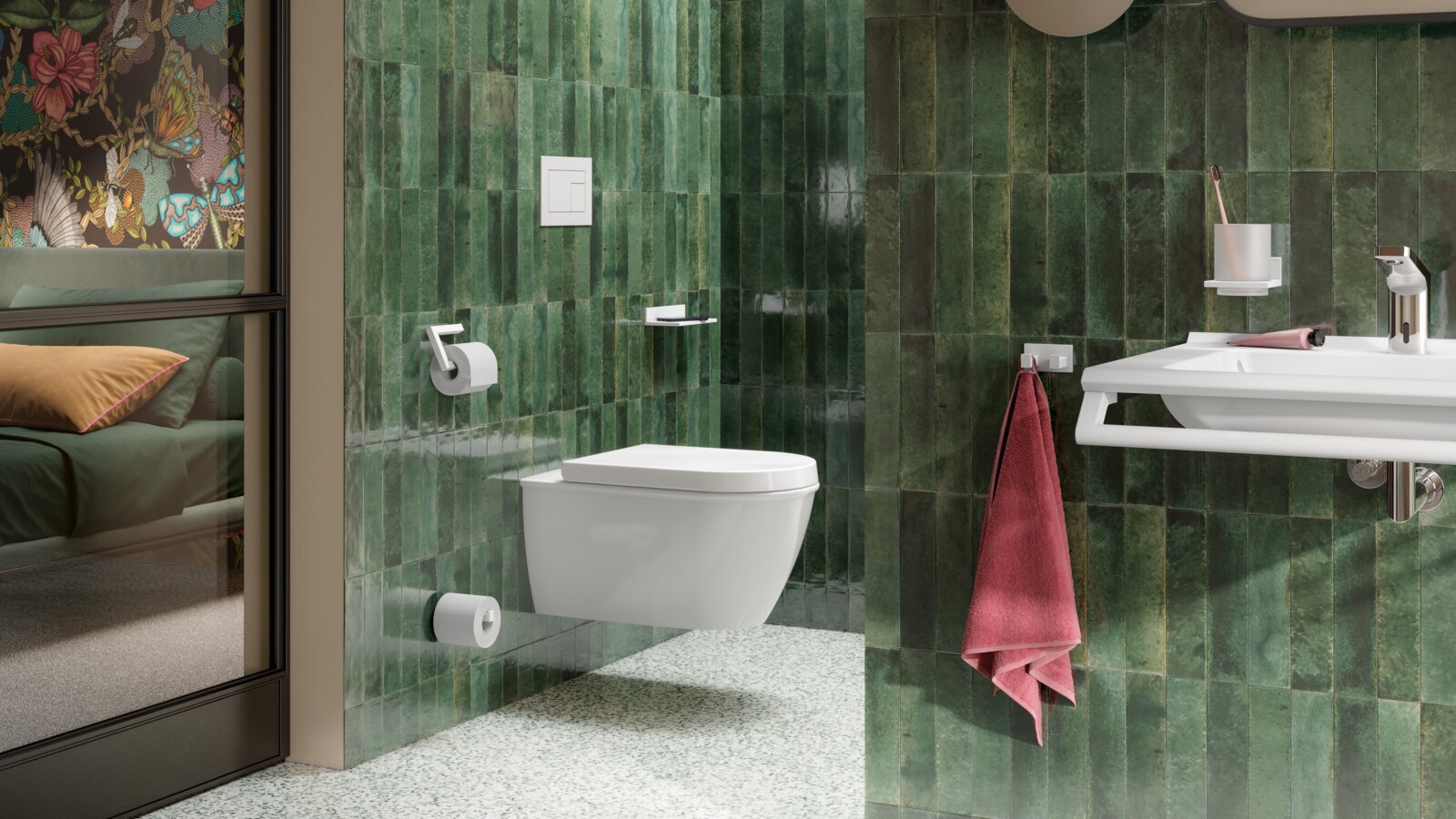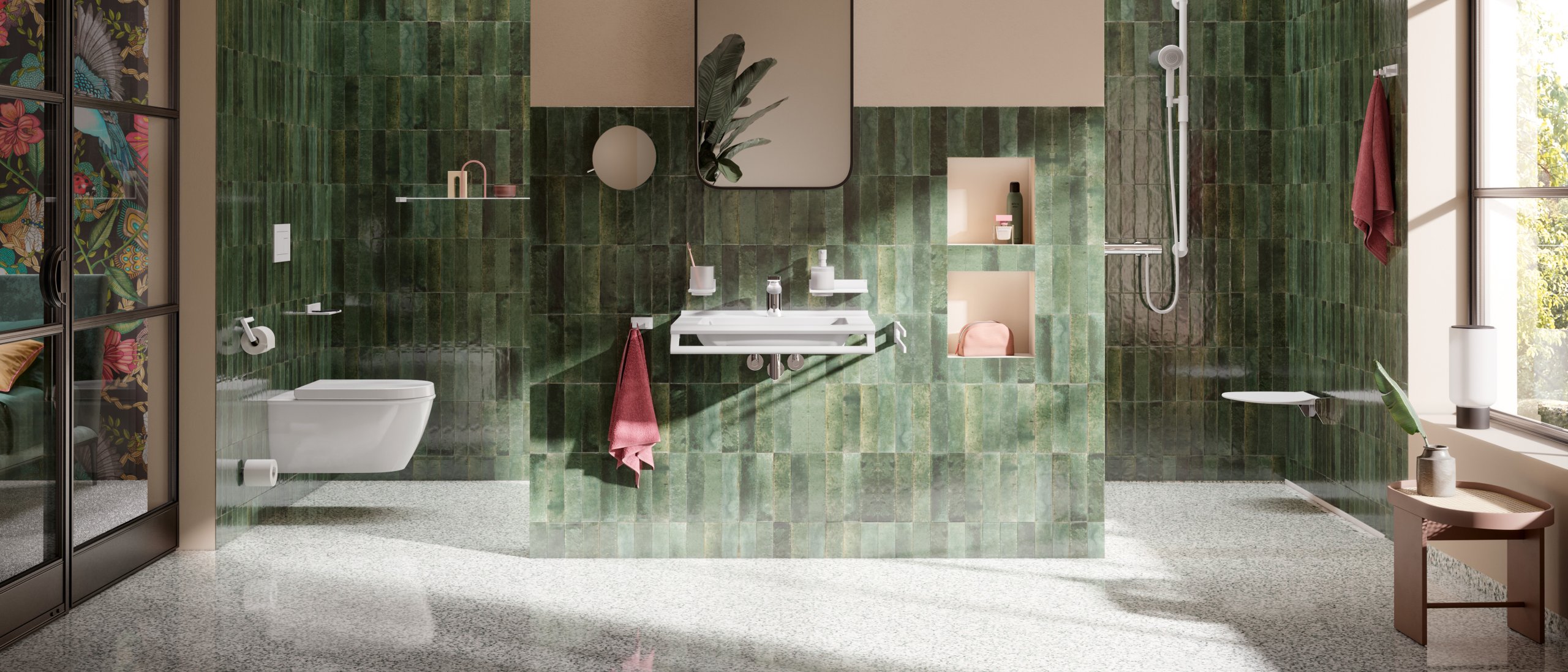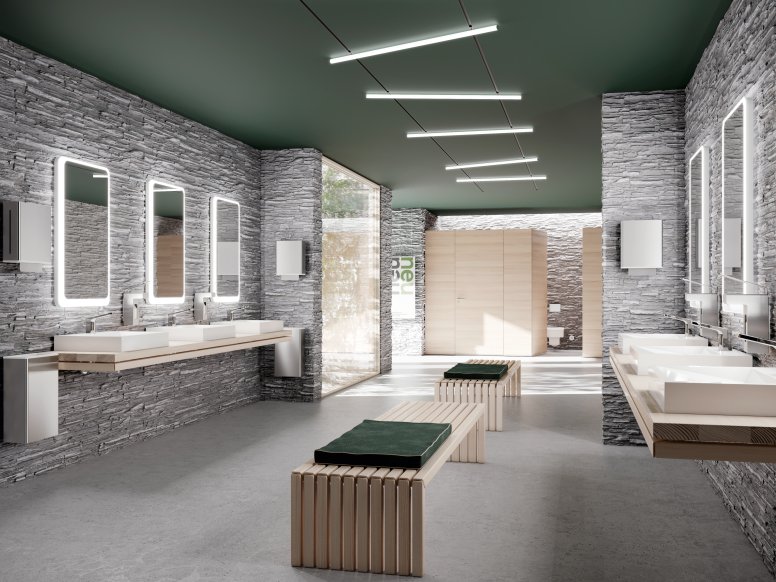HEWI MAG/Architecture
Basic geometric shapes in architecture
Architecture without basic geometric shapes is unimaginable. All construction is based on them. But what effect do these shapes have on human perception and behavior? We give you an overview of different basic shapes in architecture, with special attention paid to the bathroom.
The urban space is a world full of geometric bodies. Prisms and pyramids can be found everywhere. Platonic and Archimedean solids are just as common as cubic shapes. Most architectural structures are polyhedra—whether very simple or extremely complex. And this is no modern trend: The human need for comfort, beauty and even self-expression is echoed in geometry. Science and art have been closely connected since antiquity, and geometry has been an integral part of architecture ever since. It has, however, evolved and improved over the ages. Whether a simple residential structure or a carefully planned and designed architectural work of art—all are possible today.
Functional, simple aesthetics in the Bauhaus style
One example of an architectural style that utilizes geometric shapes is the Bauhaus style. This style is characterized by unconventional materials and complementary colors as well as simple, symmetrical shapes. In essence, there is no single Bauhaus style. Rather, various artists united under this label starting in 1919. These artists were pursuing a goal: For them, architecture was a “Gesamtkunstwerk”—which is why they sought to close the gap between art and craft. They also wanted to facilitate a good quality of life for all people of all social classes. This meant the focus was more on designing buildings for everyone instead of concentrating on luxury properties. The Bauhaus style was thus the genesis of the first industrialized housing: efficient and useful. There is a reason that “form follows function” is still a slogan frequently used in architecture today. One example of this is the Bauhaus-style building in Dessau, Germany designed by Walter Gropius.
But what effects do different geometric shapes have on people?
Strength and stability: cubic forms in architecture
The cubic shape is considered particularly relevant in architecture because a cubic building conveys a sense of strength and stability. Cubic shapes have a distinct geometry, which is why they appear stable and secure. Effective orientation is possible in this kind of building because all corners are uniformly executed. Cubic shapes are particularly suitable for buildings in which a regulated, orderly flow is encouraged. An example of this is administrative buildings or public facilities.
One example of a basic cubic shape in structural architecture can be found in the HEWI reference in "FutureHAUS Dubai".

Unequivocal symmetry: square shapes in architecture
Square shapes have a similar function and effect as cubic shapes. Square shapes are just as unequivocally symmetrical. They create a feeling of comfort and coziness in people. This makes the square shape particularly well suited for residential buildings, as it makes people feel safe and secure. The square floor plan is also ideal for residential buildings because it requires the shortest exterior wall length for the same living area—and, with it, lower wall and heating costs—than a longer, narrower building. In addition, a square house consisting of, say, two floors, requires less of a plot area than an angled house. Typically square buildings include urban villas, Scandinavian country houses and even the classic Bauhaus style.
A reference example of an urban villa where HEWI products were used can be found here: https://www.hewi.com/de/unternehmen/referenzen/stadtvilla.
Other geometric shapes
Aside from square or cubic geometric shapes, other shapes are also conceivable. These include round, elliptical or trapezoidal structures. Elliptical shapes are often used in representative areas, such as lobbies and conference rooms. Trapezoidal structures, on the other hand, create a dynamic and active atmosphere, which is why architects often choose them for sports and recreational facilities.

Think about geometric shapes in architecture
It is important to remember that each shape has its own meaning and effect—which can be interpreted differently depending on context and purpose. For you as an architect or planner, it is important to think about the effect of basic geometric shapes when designing structures. The right shape can have an impact on how a structure affects people. Think carefully about the shapes you use in your designs. Only then will you achieve the desired effect and meet the needs of the users.
Stay informed
Would you like to receive regular information on architectural and bathroom design topics? Our newsletter keeps you up to date. Subscribe now for free.





